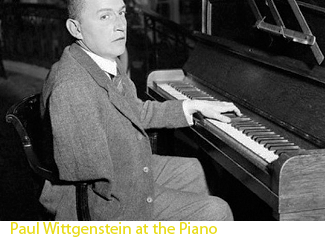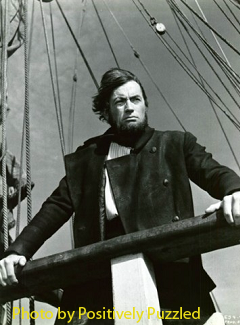Article
Grief and Resilience After Loss of Mind, Body, and Homeland
Author(s):
Grief is the psychological, behavioral, social and physical reaction to a loss that is closely tied to a person’s commitment to heal.

We know that different people, cultures, and traditions all grieve differently. Yet it is ultimately our capacity for resilience that allows each of us to process the grief-inducing event in his or her own way.1 –James L. Knoll IV, MD
Grief
Grief is the psychological, behavioral, social and physical reaction to a loss that is closely tied to a person’s identity. It may be “as constant as a cloud of black flies” (James Crumley); remain as the pain from “a lingering illness” (John Milton); or shed as the “skin sheds rain” (Ralph Waldo Emerson). In his commentary Sinking into Grief, Dr James Knoll1 calls attention to the ways that grief is processed and make it explicit that it is: “Our capacity for resilience” that shapes and determines the outcome of the “grief-inducing event.”1
Here I explore the relationship between the grief reaction and the resilient response in 2 fictional and 2 real people:
• Duke Senior, from Shakespeare’s As You Like It,2who loses his kingdom through his brother’s betrayal
• Poet Rachel Hadas, who writes Strange Relation: A Memoir of Marriage, Dementia and Poetry,3 a bookabout losing her musician-husband to the cognitive ravages of early-onset dementia
• Concert pianist Paul Wittgenstein, who coped with life and succeeded as a professional musician after his right arm was amputated4
• The compulsive pursuits of monomaniacal Captain Ahab after he was dismembered by the White Whale in Herman Melville’s Moby-Dick5
Resilience
Resilience (from L. resilire “to rebound, recoil,” from re- “back” + salire “to jump, leap”) is the ability to cope with, overcome, and grow mentally, physically, or spiritually in the face of adversity. Adversity (from L. adversus, “turned against”) is a state of hardship, affliction, or misfortune. Those with resilience find truth in Nietzsche’s saying, “If it doesn’t destroy us it makes us stronger.” Every difficulty overcome, every victory won, increases one’s resilience, providing the feeling of confidence in the ability to transcend the next growth enhancing adversity.
Resilient persons:
• Have a challenge-orientation, knowing they will grow if they overcome the adversity
• Make a commitment to master whatever adversity besets them
• Locate the source of control, for whatever problem they encounter, within themselves
• Persevere in their commitment
Non-resilient persons see adversity as:
• Pervasive
• Permanent
• Daunting (they tend to allow personality problems to prevent them from taking a problem-solving approach and using adversity constructively in “being-in-the-world.”)
Being-in-the-world
This concept, “being-in-the-world, is made up of a dialogue between in 3 Velts (worlds):
• Umvelt: dialogue with nature
• Eigenvelt: dialogue with self
• Mitvelt: dialogue with others6
Duke Senior overcomes the loss of his homeland by actualizing his relationship with nature (Umvelt).2 Rachel Hadas,3 married to an uncommunicative husband with dementia, finds the key to unlock the mental jail of loneliness in writing (Eigenvelt). Paul Wittgenstein used the adversity of the amputated limb to communicate with the concert audience, his Mitvelt.4
Duke Senior: Betrayal and loss of homeland
Shakespeare’s Duke Senior faces extreme adversity, having been betrayed and exiled by his jealous younger brother.2 Giving voice to the resilience he has developed in overcoming his misfortune, the Duke compares the adversity of his suffering (for example, from the elements, “the icy fang/And churlish chiding of the winter’s wind . . .”) to an ugly toad that legendarily held healing qualities (a “precious jewel’) in its head.2
The jewel to which Duke Senior alludes is the authentic life he has evolved in the restorative Forest of the Ardennes, to which he has been banished, far from the flattery of the “painted pomp” of court, replete with “counsellors/That feelingly persuade me what I am.”2
Now, my co-mates and brothers in exile,Hath not old custom made this life more sweetThan that of painted pomp? Are not these woodsMore free from peril than the envious court?Here feel we not the penalty of Adam,The seasons’ difference, as the icy fangAnd churlish chiding of the winter’s wind,Which when it bites and blows upon my bodyEven till I shrink with cold, I smile, and say‘This is no flattery. These are counselorsThat feelingly persuade me what I am.’Sweet are the uses of adversityWhich, like the toad, ugly and venomous,Wears yet a precious jewel in his head;And this our life, exempt from public haunt,Finds tongues in trees, books in the running brooks,Sermons in stones, and good in everything.2(p1-17)
The Duke concludes that nature “speaks” more eloquently and truly than the tongues of courtiers, that running brooks are fresher than many books, and that stones have as much to teach as church sermons. He overcame betrayal and exile from his homeland by enhancing his intimacy with nature (the Umvelt).
Imprisoned in the silence of loneliness
In 2005, George Edwards, a composer and professor of music at Columbia University, received a diagnosis of dementia at age 61. His wife, Rachel Hadas,3 a professor of literature, explores the gradual decline in a memoir of poems (her own and those of others) and personal reflections: “Turning life at its bleakest or dullest into prose was absorbing and also rewarding,” she writes. [T]he more I wrote, the more I remembered and understood.”3
Hadas developed the ability to use literature when she was a teenager to deal with her father’s death. She returned to it again at the time of her husband’s dementia:
Since my father’s death when I was seventeen years old, poetry has steadily helped me not only to express what I was feeling at a given time, but also to figure out what I was thinking. In the case of a situation as elusive and amorphous, but also as powerful and all-pervasive as George’s illness, poetry’s gift of trope often shed crucial light on the prevailing gloom.3
Hadas’ husband’s dementia was complicated by his premorbid taciturn nature. He lived so much in silence that it was difficult to discern where his natural propensity left off and the cognitive began-“George had always been somewhat quiet and withdrawn, so his gradually becoming more quiet and withdrawn [initially] didn’t seem cause for alarm.”3(p16)
During a neurological examination, when George told the doctor he had been married since 1990, not 1978, Hadas writes:
I do remember that rising inside me during this whole long, long appointment was a feeling…a sharply etched loneliness-a loneliness that stepped out from the shadow to which I had so far consigned it right onto center stage.3(p12)
Living alongside a husband with dementia was, for Hadas, like living in a house in which the structure inhabited is no longer a shared household, a cozy refuge, but “now resembles a prison that mocks you with the fact that you long ago entered it voluntarily-and a prison, furthermore, where you have become responsible for the daily care of a warden who has mysteriously changed into a ward.”3(p51)
In the following poem, the speaker forgets where she has put the key that will enable her to escape from this mental jail.
The Cold Hill Side
As months and years accumulate,I miss you more and more.Forgetting where I put the key,I sometimes find a doorand other times feel stunned and lost,though living in my ownbody and life, presumably,bewildered and aloneas the knight, kidnapped and releasedto a dim world, who said
And I awoke and found me here
on the cold hill side.3(p112)
The speaker could be Hadas or her husband (which the author denies) and the lost key could be “resilience” that they have misplaced or forgotten and the mental jail, loneliness. Soon after writing this poem Hadas begins the process of looking into assisted-living placement for her husband, explaining:
If there was one reason I decided that I could no longer live with George, that coordinating his care had gone from arduous and unrewarding routine to unbearable pain, the reason was the grinding loneliness imposed by his silence…I was exhausted and lonely.3(p133)
Through literature, Hadas discovered the key to escape loneliness.
[T]hese works of literature didn’t soothe or console or lull me with their beauty. On the contrary, they made me sit up and pay attention. Each in its own way, they helped me by telling me the truth, or rather a truth, about the almost overwhelming situation in which I found myself. I learned what isn’t always obvious under such circumstances: I wasn’t alone.3
Hadas discovered the key out of the prison of loneliness in her Mitvelt relationship with literature.

The concert pianist who made one hand play like two
Paul Wittgenstein (1887–1961) was a gifted concert pianist. Such composers as Johannes Brahms, Gustav Mahler, Arnold Schoenberg, and Richard Strauss, with whom the young Paul played duets and made his public debut in 1913, frequently visited his wealthy and cultured family.4
When World War I broke out, Wittgenstein was called up for military service. While leading a patrol near Poland, a sniper’s bullet shattered the bones of his right elbow. The arm was amputated. Wittgenstein was taken prisoner by the Russians and confined to a primitive convalescent ward of a Siberian P.O.W. camp. He resolved to continue his career using only his left hand and set about solving his major problem: how to make a single hand play as well as two.
In the corner of a crowded ward for invalids, day after day, and hour upon hour, Wittgenstein tapped his freezing fingers on a wooden box on which he had drawn the keyboard, listening intently to the music he imagined hearing. Obsessively tapping out the keys, he developed unusual capabilities.
[H]is most far-reaching innovation was a combined pedaling and hand-movement technique that allowed him to sound chords that were strictly impossible for a five-fingered pianist to play.4
Finally released in November 1915, Wittgenstein returned to Vienna, where he studied and practiced intensely. His family was exceedingly wealthy and he commissioned a number of pieces for the left hand, including works by Prokofiev, Britten, and Ravel.
Wittgenstein, who became a successful performing artist before World War II, used the adversity of the missing right arm to develop his Mitvelt, amazing his concert audience.
A monomaniacal and vindictive compulsion
Melville5 recounts a whaling journey on which the monomaniacal Captain Ahab chases an enormous white whale, Moby-Dick, who ultimately dismemberes him, seeking revenge. Ahab ultimately dooms the crew of the Pequod (except for Ishmael) with his obsession with Moby-Dick. During the final chase, Ahab hurls his final harpoon while yelling, “. . . to the last I grapple with thee; from hell’s heart I stab at thee; for hate’s sake I spit my last breath at thee.”5
The harpoon lodges in Moby-Dick’s flesh. Ahab, caught around the neck by a loop in his harpoon’s rope and unable to free himself, is dragged into the cold oblivion of the sea with the injured whale.
He is symbolically destroyed by his obsession with revenge. His motivation for pursuing Moby-Dick is summed up in this passage:
The White Whale swam before him as the monomaniac incarnation of all those malicious agencies which some deep men feel eating in them, till they are left living on with half a heart and half a lung. That intangible malignity which has been from the beginning; to whose dominion even the modern Christians ascribe one-half of the worlds; which the ancient Ophites of the east reverenced in their statue devil; - Ahab did not fall down and worship it like them; but deliriously transferring its idea to the abhorred white whale, he pitted himself, all mutilated, against it. All that most maddens and torments; all that stirs up the lees of things; all truth with malice in it; all that cracks the sinews and cakes the brain; all the subtle demonisms of life and thought; all evil, to crazy Ahab, were visibly personified, and made practically assailable in Moby-Dick. He piled upon the whale’s white hump the sum of all the general rage and hate felt by his whole race from Adam down; and then, as if his chest had been a mortar, he burst his hot heart’s shell upon it.5
Conclusion
The phenomenon of resilience is a quality of the utmost importance in every aspect of medicine. We must identify the emotions involved-not only grief, but the other affects often associated with it-guilt, shame, and anger. The feelings must be addressed, accepted, and owned. As
psychiatrist Dr Spielvogel’s says in the punch line of Portnoy’s Complaint9-a novel about guilt, shame, and grief over the protagonist’s unlived life-“Now vee may perhaps to begin.” Then patient and psychotherapist are finally ready to take the first steps on the path to resilience and even healing.
References:
References
1. Knoll J. Sinking into grief.
Psychiatr Times.
2012(4):40.
2. Shakespeare W.
As You Like It.
http://internetshakespeare.uvic.ca/. Accessed June 29, 2012.
3. Hadas R.
Strange Relation: A Memoir of Marriage, Dementia, and Poetry.
Philadelphia, PA: Paul Dry Press; 2011.
4. Waugh A.
The House of Wittgenstein: A Family at War.
London: Bloomsbury Publishing; 2008.
5. Melville H.
Moby-Dick; or, the Whale.
New York: Harper & Brothers; 1851.
6. Sperber M. Commentary: suicide and alienation.
Psychiatr Times.
2011;28(11):1-4.
7. Melville H.
Moby-Dick; or, the Whale.
Northwestern-Newberry edition. Northwestern University Press; 1988.
8. Levertov D. Talking to Grief. http://www.english.illinois.edu/maps/poets/g_l/levertov/onlinepoems.htm. Accessed Jun 29, 2012.
9. Roth P.
Portnoy’s Complaint.
New York: Random House; 1969.







